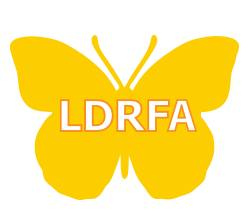Are you concerned about your child? Have you noticed some signs that are making you wonder about your child reaching developmental milestones? Do you have an undiagnosed learning disability?
Although learning disorders occur in very young children, they are usually not recognized until the child reaches school age.
Signs of A Learning Disability
 Here is a list of signs of a learning disability, depending on the age of the child, may include the following early observations:
Here is a list of signs of a learning disability, depending on the age of the child, may include the following early observations:
- Is your child having difficulty adjusting to school, Preschool/Kindergarten?
- Does your child have separation anxiety?
- Can your child follow simple and/or multi-step directions?
- Does your child use scissors, have difficulty drawing, painting, printing letters or numbers?
- Can your child dress him/herself; use buttons, zippers?
- Does your child demonstrate difficulties on the playground, running, hopping, jumping, catching a ball, or maintaining balance?
- Does your child have unclear speech, struggle communicating, responding to questions, verbally sharing ideas?
- Does your child maintain focus and play with games, toys, puzzles, etc.?
- Does your child play with peers?
- Is your child sleep-deprived?
- Does your child have difficulty remembering or maintaining information?
- Is your child easily distracted?
- Does your child demonstrate extreme behaviors?
- Can your child maintain friendships?
If you are concerned, Universal Screenings are available in the US; ask your Pediatrician/Health Provider about available screenings in your state. Typically, a 1-2 year delay signifies further investigation. As noted, statistics indicate that as many as 1 in 4 children, ages 0-5, are at moderate or high risk for developmental, behavioral, or social delays. Optimizing the developmental support children receive is directly connected to developmental and behavioral screenings that can be first noted by your pediatrician.
Children aged birth to five years develop at different rates, however, developmental milestones are important indicators and the American Academy of Pediatrics recommends that children be screened for general development using standardized, validated tools at 9, 18, and 24 or 30 months and for autism at 18 and 24 months or whenever a parent or provider has a concern.
A screening provides a quick snapshot of health and developmental status. Indicators are assessed to see if further evaluation is needed to identify potential difficulties that might necessitate interventions or special education programs services.
An assessment is a continual process of observing, gathering, recording, and interpreting information to answer questions and make developmental and instructional decisions about children. Once children are diagnosed, on-going assessments are critical components in providing on-going targeted interventions.
An Educational Evaluation and testing by a trained professional can help identify a learning disorder. The next step is Special Education, which involves helping your child in the areas where he or she needs the most help. Teachers, tutors, Speech/Language Pathologists, and Occupational Therapists will work directly with parents, schools, and children to recommend and provide accommodations to the curriculum.
Symptoms of Learning Disability
Learning disorders affect how a person understands, remembers and responds to new information. Once a child has entered school, signs and symptoms of difficulty include the following:
- Listening or paying attention to teachers, peers
- Staying organized
- Speaking in complete sentences
- Understanding new words or concepts
- Learning how to read (Identifying the sounds that correspond to letters)
- Loss of energy and interest while writing
- Writing down thoughts in a logical sequence
- Understanding Math concepts
- Recalling numbers in sequence
- Distinguishing left from right
- Recognizing logical information sequences
- Demonstrates a change in performance depending on subject or increased level of responsibility
- Hand-eye coordination
- Sensitivity to loud and/or repetitive noises
Dyslexia, Dysgraphia, Dyspraxia, Dyscalculia ,intellectual disability and ADHD(attention deficit hyperactivity disorder adhd) are common learning disabilities identified in school-age children. Although it is typical to demonstrate some of the above mentioned, signs/symptoms, consistent inattention, unfocused activity, impulsivity, and anxiety will interfere with and reduce the quality of a child’s performance and overall success in school.
As previously stated, learning disorders do not go away, but strategies to work around them can make them less of a problem.
The National Adult Literacy Survey, 1992, found that 58% of adult with self-reported learning disabilities lacked the basic functional reading and writing skills needed to experience job and academic success (Kirsch, 1993). Most of these adults have not graduated high school due to the failure of the school system to recognize and/or accommodate their specific learning disability.
People of all ages with learning disabilities and disorders can learn strategies for coping with their disabilities. Getting help earlier increases the likelihood for success in school and later in life. If children with learning disabilities remain untreated, a child or adult may begin to feel frustrated which can lead to low self-esteem, depression, and other problems.
Professionals can work to help individuals learn skills by building on their strengths and developing ways to compensate for their weaknesses. As each person’s disability is individualized, interventions will vary depending on the nature and extent of the disability.
Learn more:
- https://www.cdc.gov/ncbddd/actearly/milestones/milestones-5yr.html
- https://www.ninds.nih.gov/Disorders/All-Disorders/Dyslexia-Information-Page
Kirsch, Irwin S., Ann Jungeblut, Lynn Jenkins, et al. (1993) Adult Literacy in America: A First Look at the Results of the National Adult Literacy Survey, (pg. 44) U.S. Department of Education, NCES, Washington, DC.

